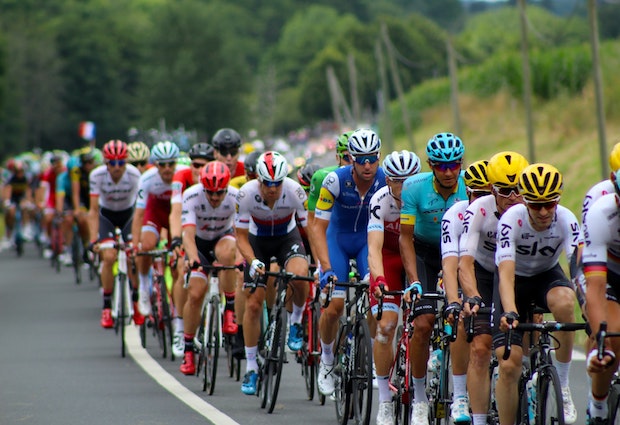Live streaming and broadcasting technology has revolutionised how fans can follow professional cycling events like the Tour de France and Giro d’Italia. Where once getting live coverage of these multi-stage races was difficult, today’s technology allows viewers to watch every moment no matter where they are in the world. This article will examine the key technologies and innovations that have enabled this live-streaming revolution.
On Bike Cameras and Sensors
One of the biggest developments has been fitting riders’ bikes with cameras and sensors to capture footage from inside the peloton. Small, aerodynamic cameras mounted under the saddle or on the handlebars can broadcast live video back to the production team. Onboard sensors can also provide real-time data on things like speed, heart rate, and power output. This opens up new perspectives and insights for viewers, putting them right inside the action. The live data also helps commentators analyse rider tactics and performance.
Helicopter and Motorbike Cameras
Getting aerial shots of the race has long been an important part of TV coverage. Initially, this required flying a helicopter overhead and using a gyro-stabilised camera. However, more recently, stealthy motorbikes riding in amongst the riders have become a key source of live footage. Their onboard stabilised cameras and ability to weave through the peloton provide exciting images and perspectives. The live helicopter shots continue to provide an invaluable overview of how the race is unfolding.
Broadcasting from the Team Cars
Outfitting team cars and buses with cameras and transmitters has also become standard practice. This allows broadcasters to get live interviews with team directors as the race progresses. It provides an inside perspective on how teams are responding to events out on the road. The easy access to live interviews and team communications opens up new storytelling opportunities for broadcasters.
Transmitting Live Video from the Course
A complex network of wireless video transmitters along the racecourse relays live footage back to the production hub. As mentioned, on-bike cameras have transmitters that send signals to nearby motorbikes. Using relay helicopters to transmit video back to fixed receivers stationed along the route for wider broadcasting requires meticulous planning and infrastructure to ensure uninterrupted live video from across a 150km stage, but it’s worth it for more exciting programming.
Live Streaming Production – Insights from Casino Studios
Once the live video, data, and audio have been transmitted back to the host broadcaster’s studio production truck, dozens of video and audio technicians piece together the live broadcast by rapidly switching between different video feeds and graphics. The studio has all the capabilities of a full TV production control room to create packaged highlights segments and live interviews.
This centralised live production ability is similar to technology used by casinos to live stream gaming tables and machines from their onsite studios. The Tour de France host broadcasting relies on state-of-the-art production trucks capable of receiving and managing dozens of live HD video inputs while inserting commentary, graphics, timing data, and more.
Much like the live streams from casino studios, the cycling production trucks allow the host broadcaster to assemble compelling live coverage that is live streamed from a studio from remote locations.
Distributing Via Satellite and Online Streaming
From the centralised studio production, the live broadcast is distributed simultaneously via satellite links and online streams. Satellite broadcasting enables live transmission to TV networks globally for broadcast to their audiences. Online live streaming over IP allows any viewer with an internet connection to tune in via their device. Platforms like YouTube, Facebook, and cycling websites carry the stream live for digital audiences.
The proliferation of satellite broadcasting in the 1980s brought live Tour de France coverage to many more countries. Now, online streaming expands accessibility even further, with live streams reaching huge audiences on phones, tablets, computers, and smart TVs.
Innovations in video technology, wireless transmission, and broadcasting over the past 30 years have revolutionised how cycling fans can follow the action at the Tour de France, Giro d’Italia, and other races. Onboard cameras put viewers in the heart of the peloton, while sophisticated production studios enable compelling live broadcasts that capture all the excitement of professional cycling. With the rise of online streaming, these elite races are now more accessible than ever to fans worldwide.








